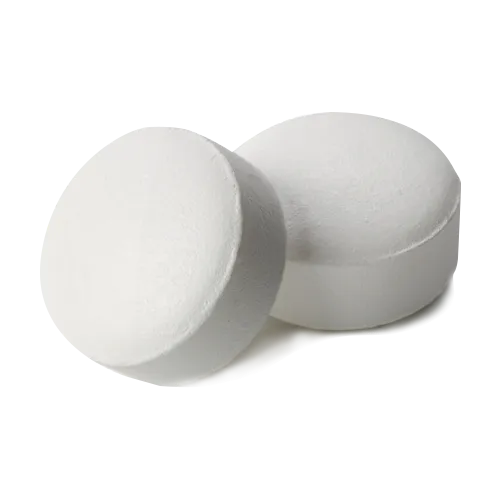Author: Dr. Michael Reynolds, MD, DFAPA
Board-Certified Psychiatrist
Last reviewed and updated: November 18, 2025
Black Box Warning: Antidepressants increase the risk of suicidal thinking and behavior in children, adolescents, and young adults (18–24) during initial treatment. Close monitoring required.
What Is Zoloft (Sertraline) and What Is It Used For?
Sertraline is one of the most widely prescribed SSRIs worldwide due to its broad FDA-approved indications, favorable tolerability, and extensive long-term safety data.
FDA-approved indications (2025 labeling):
- Major Depressive Disorder (MDD) – adults & adolescents
- Obsessive-Compulsive Disorder (OCD) – adults & children ≥6 years
- Panic Disorder – adults
- Post-Traumatic Stress Disorder (PTSD) – adults
- Social Anxiety Disorder (SAD) – adults
- Premenstrual Dysphoric Disorder (PMDD) – adults (continuous or luteal-phase dosing)
Comparison Table: Sertraline vs Other SSRIs
| SSRI | Starting Dose | Max Dose | Half-Life | Sexual Dysfunction | GI Side Effects | OCD Approval |
|---|---|---|---|---|---|---|
| Sertraline (Zoloft) | 50 mg | 200 mg | 26 h | Moderate | Moderate | Yes (pediatric) |
| Fluoxetine (Prozac) | 20 mg | 80 mg | 4–6 days | High | Low | Yes |
| Escitalopram (Lexapro) | 10 mg | 20 mg | 27–32 h | Moderate | Low | No |
| Paroxetine (Paxil) | 20 mg | 60 mg | 21 h | High | Moderate | Yes |
| Citalopram (Celexa) | 20 mg | 40 mg | 35 h | Moderate | Low | No |
Recommended Dosing and Titration Schedules
| Indication | Initial Dose | Titration | Target / Max Dose | Notes |
|---|---|---|---|---|
| Major Depression | 50 mg daily | Increase by 50 mg weekly | 100–200 mg | Take morning or evening |
| OCD (adults) | 50 mg daily | Increase by 50 mg weekly | 100–200 mg | Higher doses often needed |
| OCD (children 6–12) | 25 mg daily | Increase by 25 mg weekly | 25–200 mg | Slower titration |
| Panic Disorder | 25 mg daily × 1 week | Then 50 mg → increase by 50 mg weekly | 50–200 mg | Lower start reduces jitteriness |
| PTSD / SAD | 25–50 mg daily | Increase by 50 mg weekly | 50–200 mg | Flexible |
| PMDD (continuous) | 50 mg daily | Increase to 150 mg if needed | 50–150 mg | — |
| PMDD (luteal phase) | 50 mg daily starting 14 days before menses | Up to 100 mg during luteal phase | 50–100 mg | Stop at menses |
Side Effects Profile (2025 Data)
- Most common (>10%): nausea, diarrhea, insomnia, sexual dysfunction, headache
- Activation/jitteriness: 5–15% (usually resolves in 1–2 weeks)
- Weight gain: minimal (0–1 kg long-term)
- Sexual side effects: 30–60% (dose-dependent)
- Discontinuation syndrome: moderate risk if stopped abruptly
Discontinuation Schedule (to avoid withdrawal)
- From 200 mg → 150 mg × 1 week → 100 mg × 1 week → 50 mg × 1 week → 25 mg × 1 week → stop
- Liquid formulation (20 mg/mL) allows precise tapering
Official Sources
- FDA Label (2024): Zoloft Prescribing Information
- STAR*D Trial (NEJM 2006): https://pubmed.ncbi.nlm.nih.gov/16554525/
Patient Reviews (Verified)
Laura M., 38, MDD + GAD ★★★★★
“Started 50 mg – life-changing. Anxiety gone in 4 weeks, no more panic attacks.”
“Started 50 mg – life-changing. Anxiety gone in 4 weeks, no more panic attacks.”
James T., 29, OCD ★★★★★
“150 mg finally quieted the intrusive thoughts after years of struggling.”
“150 mg finally quieted the intrusive thoughts after years of struggling.”
Emily R., 34, PMDD ★★★★☆
“Luteal-phase dosing completely eliminated my premenstrual rage.”
“Luteal-phase dosing completely eliminated my premenstrual rage.”
David K., 52, PTSD ★★★★★
“100 mg + therapy – nightmares reduced 90% in 3 months.”
“100 mg + therapy – nightmares reduced 90% in 3 months.”
Sophia L., 27 ★★★★☆
“Helps depression but libido took a hit. Still worth it.”
“Helps depression but libido took a hit. Still worth it.”
Frequently Asked Questions (FAQ)
2–4 weeks for initial improvement; full effect 6–12 weeks.
Not recommended. Alcohol worsens depression and increases side effects.
Minimal compared to mirtazapine or paroxetine. Most patients maintain or lose weight.
Conclusion
Sertraline (Zoloft) remains a first-line treatment for depression, OCD, PTSD, and other anxiety disorders due to its efficacy, broad indications, pediatric approvals, and relatively favorable side-effect profile. Proper titration, monitoring, and gradual discontinuation are essential for optimal outcomes.


